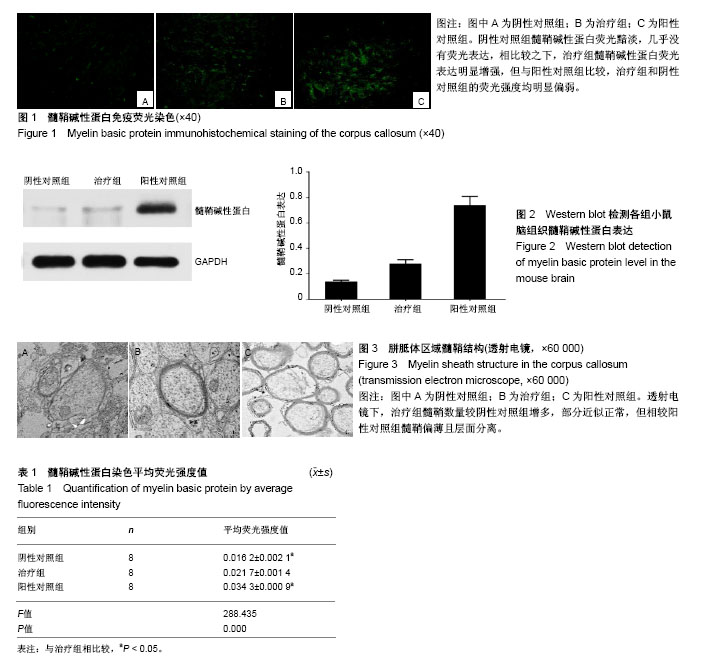| [1] Yang E, Prabhu SP. Imaging manifestations of the leukodystrophies, inherited disorders of white matter. Radiol Clin North Am. 2014;52(2):279-319.[2] Leite CC, Lucato LT, Santos GT, et al. Imaging of adult leukodystrophies. Arq Neuropsiquiatr. 2014;72(8):625-632.[3] Turón-Viñas E, Pineda M, Cusí V, et al. Vanishing white matter disease in a spanish population. J Cent Nerv Syst Dis. 2014;6:59-68.[4] Helman G, Van Haren K, Bonkowsky JL, et al. Disease specific therapies in leukodystrophies and leukoencephalopathies. Mol Genet Metab. 2015;114(4):527-536.[5] Raff MC, Abney ER, Cohen J, et al. Two types of astrocytes in cultures of developing rat white matter: differences in morphology, surface gangliosides, and growth characteristics. J Neurosci. 1983;3(6):1289-1300.[6] Miranda CO, Brites P, Mendes Sousa M, et al. Advances and pitfalls of cell therapy in metabolic leukodystrophies. Cell Transplant. 2013;22(2):189-204.[7] Najm FJ, Madhavan M, Zaremba A, et al. Drug-based modulation of endogenous stem cells promotes functional remyelination in vivo. Nature. 2015;522(7555):216-220.[8] Wang C, Luan Z, Yang Y, et al. High purity of human oligodendrocyte progenitor cells obtained from neural stem cells: suitable for clinical application. J Neurosci Methods. 2015;240:61-66.[9] Bunge RP. Glial cells and the central myelin sheath. Physiol Rev. 1968;48(1):197-251.[10] Filley CM, Fields RD. White matter and cognition: making the connection. J Neurophysiol. 2016;116(5):2093-2104.[11] Lesca G, Vanier MT, Creisson E, et al. X-linked adrenoleukodystrophy in a female proband: clinical presentation, biological diagnosis and family consequences. Arch Pediatr. 2005;12(8):1237-1240.[12] van der Knaap MS, Bugiani M. Leukodystrophies: a proposed classification system based on pathological changes and pathogenetic mechanisms. Acta Neuropathol. 2017;134(3): 351-382.[13] Keough MB, Yong VW. Remyelination therapy for multiple sclerosis. Neurotherapeutics. 2013;10(1):44-54.[14] Pouwels PJ, Vanderver A, Bernard G, et al. Hypomyelinating leukodystrophies: translational research progress and prospects. Ann Neurol. 2014;76(1):5-19.[15] Raff MC, Abney ER, Cohen J, et al. Two types of astrocytes in cultures of developing rat white matter: differences in morphology, surface gangliosides, and growth characteristics. J Neurosci. 1983;3(6):1289-1300.[16] Hughes EG, Kang SH, Fukaya M, et al. Oligodendrocyte progenitors balance growth with self-repulsion to achieve homeostasis in the adult brain. Nat Neurosci. 2013;16(6): 668-676.[17] El Waly B, Macchi M, Cayre M, et al. Oligodendrogenesis in the normal and pathological central nervous system. Front Neurosci. 2014;8:145.[18] Bergles DE, Richardson WD. Oligodendrocyte Development and Plasticity. Cold Spring Harb Perspect Biol. 2015;8(2): a020453.[19] Yeung MS, Zdunek S, Bergmann O, et al. Dynamics of oligodendrocyte generation and myelination in the human brain. Cell. 2014;159(4):766-774.[20] Nave KA, Werner HB. Myelination of the nervous system: mechanisms and functions. Annu Rev Cell Dev Biol. 2014; 30:503-533.[21] Buller B, Chopp M, Ueno Y, et al. Regulation of serum response factor by miRNA-200 and miRNA-9 modulates oligodendrocyte progenitor cell differentiation. Glia. 2012; 60(12):1906-1914.[22] Wootla B, Watzlawik JO, Denic A, et al. The road to remyelination in demyelinating diseases: current status and prospects for clinical treatment. Expert Rev Clin Immunol. 2013;9(6):535-549.[23] McMurran CE, Kodali S, Young A, et al. Clinical implications of myelin regeneration in the central nervous system. Expert Rev Neurother. 2018;18(2):111-123.[24] Kremer D, Küry P, Dutta R. Promoting remyelination in multiple sclerosis: current drugs and future prospects. Mult Scler. 2015;21(5):541-549.[25] Deshmukh VA, Tardif V, Lyssiotis CA, et al. A regenerative approach to the treatment of multiple sclerosis. Nature. 2013; 502(7471):327-332.[26] Mi S, Pepinsky RB, Cadavid D. Blocking LINGO-1 as a therapy to promote CNS repair: from concept to the clinic. CNS Drugs. 2013;27(7):493-503.[27] Sun JJ, Ren QG, Xu L, et al. LINGO-1 antibody ameliorates myelin impairment and spatial memory deficits in experimental autoimmune encephalomyelitis mice. Sci Rep. 2015;5:14235.[28] Czepiel M, Boddeke E, Copray S. Human oligodendrocytes in remyelination research. Glia. 2015;63(4):513-530.[29] Osorio MJ, Rowitch DH, Tesar P, et al. Concise Review: Stem Cell-Based Treatment of Pelizaeus-Merzbacher Disease. Stem Cells. 2017;35(2):311-315.[30] Chen LX, Ma SM, Zhang P, et al. Neuroprotective effects of oligodendrocyte progenitor cell transplantation in premature rat brain following hypoxic-ischemic injury. PLoS One. 2015; 10(3):e0115997.[31] Kobayashi Y, Okada Y, Itakura G, et al. Pre-evaluated safe human iPSC-derived neural stem cells promote functional recovery after spinal cord injury in common marmoset without tumorigenicity. PLoS One. 2012;7(12):e52787.[32] Hatch MN, Schaumburg CS, Lane TE, et al. Endogenous remyelination is induced by transplant rejection in a viral model of multiple sclerosis. J Neuroimmunol. 2009;212 (1-2):74-81.[33] Pouya A, Satarian L, Kiani S, et al. Human induced pluripotent stem cells differentiation into oligodendrocyte progenitors and transplantation in a rat model of optic chiasm demyelination. PLoS One. 2011;6(11):e27925.[34] Roach A, Boylan K, Horvath S, et al. Characterization of cloned cDNA representing rat myelin basic protein: absence of expression in brain of shiverer mutant mice. Cell. 1983; 34(3):799-806.[35] Xu WJ,Lakshman N,Morshead CM.Stem cells in the adult CNS revealed: examining their regulation by myelin basic protein.Neural Regen Res.2016;11(12):1916-1917. [36] Pedraza L, Fidler L, Staugaitis SM, et al. The active transport of myelin basic protein into the nucleus suggests a regulatory role in myelination. Neuron. 1997;18(4):579-589.[37] Weil MT, Möbius W, Winkler A, et al. Loss of Myelin Basic Protein Function Triggers Myelin Breakdown in Models of Demyelinating Diseases. Cell Rep. 2016;16(2):314-322.[38] Kelly CM, Precious SV, Scherf C, et al. Neonatal desensitization allows long-term survival of neural xenotransplants without immunosuppression. Nat Methods. 2009;6(4):271-273. |
.jpg)

.jpg)